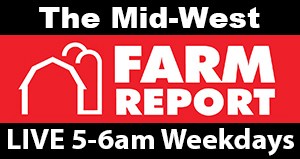
A crisis can happen anywhere at any time and fairs are not excluded from this. These can be anything from canceled concerts, severe weather, activists, biosecurity issues, ride malfunctions, or shootings and much more.
While the fair season may not kick off until summer, fair boards all across the state are working hard to prepare for their fair and these are some of the conversations they’re having. Alicia Shoults, CFE from the Ohio State Fair, has experienced a major crisis first hand. She provides insight into recognizing crisis and how to handle it once it occurs.
“As fair boards think about different types of crises, there’s a couple of types of criteria they should be thinking about,” says Shoults. “What kind of impact could a crisis have on human life, on animal life, on their organization and their community and to their facility?”
While people always want to hope for the best, Shoults says it’s important to always prepare for the worst, not only from a risk management and emergency planning standpoint, but also from a communication standpoint. It is important to think about how you will communicate with your patrons, fairgoers, community members and the media if something were to happen on your grounds.
It is important to come up with a crisis communications plan that includes things such as how you would communicate with staff, what questions will the public ask and making sure all involved have the same answers to give. You also need to put yourself in the shoes of an exhibitor or fairgoer and determine how they would get information and what they would want to hear. Then using this information, put procedures in place that best fit your fair.
“Many fair boards are volunteer driven and at a lot of these fairs people wear many hats, but they’re the only person who wears one particular hat,” explains Shoults. “If that’s the case, then there’s probably one person who’s usually responsible for posting to social media. But there could be a scenario where that person could be impacted by the crisis or they may not be able to get to the grounds or may not have power or access to their files. So it is very important to make sure that information is distributed to all key positions.”
Along with crises comes the turnaround time of how long you have to share the message of what is happening. It used to be considered the “golden hour,” however Shoults says today it is considered the “golden now”. People will be looking on social media for answers and talking about whatever the circumstance is pretty much immediately after they hear about it.
Shoults says, “There’s an old rule when it comes to statements, the 27-9-3 rule, that there should be no more than 27 words said in 9 seconds with three different concepts. If you can quickly anticipate and answer questions, share that message and come up with that streamlined statement, that would be helpful.”

Leave a Reply